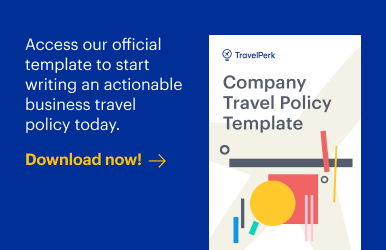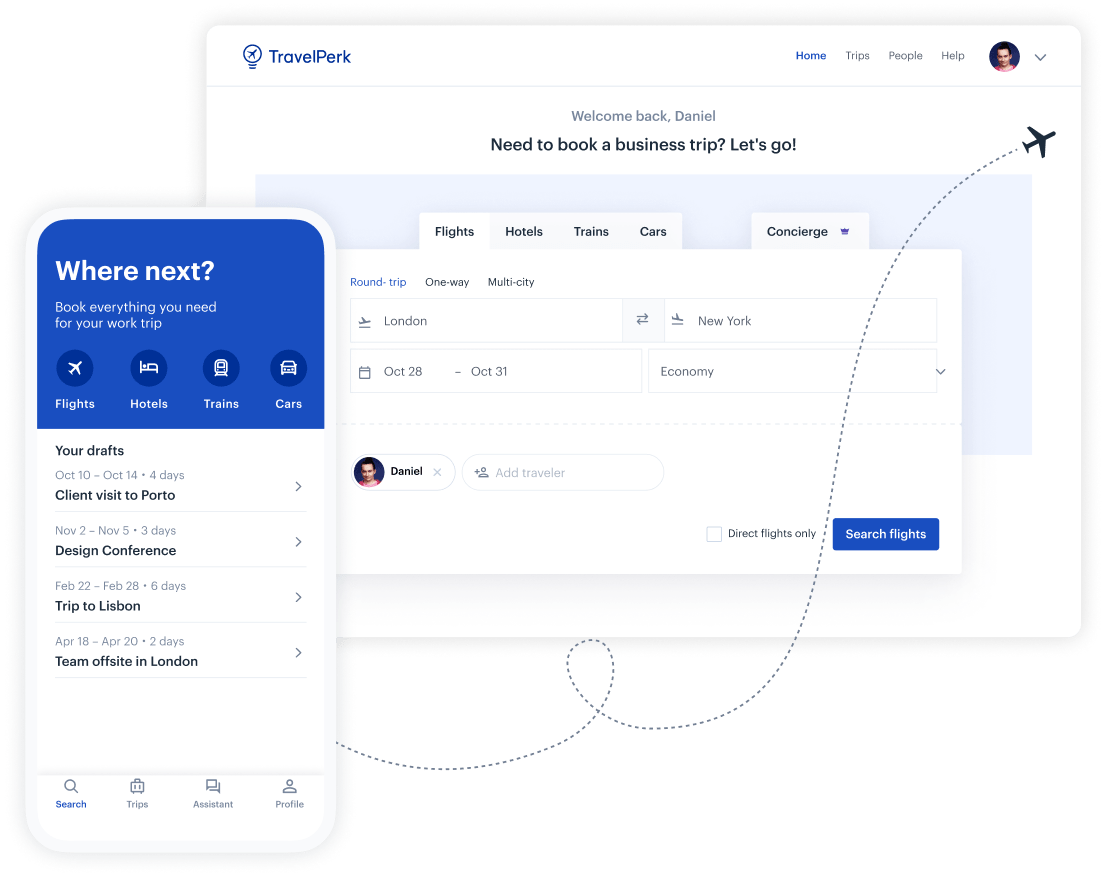How to set a budget for business travel
Business travel is once again on the rise. Statista forecasts that it will rise by 38% in 2022 and fully recover by 2024. According to a finding by Skift, this isn’t unrelated to the fact that face-to-face meetings have higher success rates. It’s also the preferred option for eight out of every ten executives.
If you’re a finance manager tasked with creating a budget for business travel, you’ll want to set up a budget that makes your team successful but also remains economically viable.
Doing this right might pose a significant challenge, and that’s why we are here to help. In this piece, we’ll discuss the five steps to help you set a workable business trip budget.
Five tips for setting up a business travel budget
When setting up a business travel budget, you’ll want to ensure that expenditures align with the business objectives, needs, and bottom line.
To make it easy, we recommend the following steps:
1. Determine how much budget is realistic for your business
The first step is to try and ascertain how much money you can spend on business travel without jeopardizing other essentials such as rent and payroll.
If business travel is starting to pick up again for your company, a good place to start to get a steer of realistic travel costs is to look into past travel patterns, such as:
- Average length of stay.
- Airfare.
- Transfers and ground transportation.
- Meal expenses.
- Lodging and entertainment.
- Conference fees.
- Visas.
- Insurance.
From here, you can begin to work out what an average business travel trip would cost and decide what budget would be realistic based on your current travel needs and the company’s goals for the future. Ultimately, anything you spend on business travel needs to be justified for the return on investment it can potentially bring to your business.
You’ll also need to make sure that you’re considering different teams’ needs when allocating your budget. Sales teams, for example, tend to travel more frequently than less customer-facing roles.
Based on these initial calculations, you’ll then need to decide what business travel expenses employees can claim and compare your current income to your current expenses. This should give you an idea of how much you should set aside for business trips.
2. Consider seasonality and external factors
Are there certain times of the year that are busier for your organization than others? Do members of your C-Suite or business development teams attend more conferences and networking events at key times of the year? All of these elements should also be factored into your business travel budget.
You’ll also need to think about other external factors which could influence how much budget you set aside for business travel e.g. rising inflation.
3. Find opportunities to reduce expenses
There are numerous effective ways to optimize your travel budget and reduce costs. Among them are:
- Booking in advance: While last-minute bookings are sometimes unavoidable, try to book your travel in advance whenever possible. Booking ahead of time gives you advantages such as cheaper flight options, the best hotel deals, and so on.
- Encouraging employees to use public transportation, such as buses, trams, and trains, as their ground transportation instead of taxis or rental cars.
- Using a travel management app for travel booking: Rather than wasting time and money searching on multiple different websites, use a travel management platform like TravelPerk where you can book your business trip in one place, and have access to competitive hotel rates and an industry-leading flight inventory.
- Book flexible fares: Meetings get canceled, strikes happen, and employees get sick. Some things are out of your control when you’re in charge of managing your company’s business travel budget. So make sure you incorporate flexible booking options so if something unexpected pops up, you can claim your money back. FlexiPerk, for example, allows you to cancel any business trip up to 2 hours before departure and get 80% of the cost back.
4. Establish a clear business travel policy and keep employees informed
Once you’ve established what budgets are realistic for your business and ways to save costs, it’s important to make sure everyone is on the same page.
Many employees consider business travel a perk, and, of course, we agree! But keeping costs under control is essential, especially if you’re a small business.
The best way to do this is to have a clear corporate travel policy that travelers have easy access to.
A travel policy will typically contain guides on the booking process, expense categories, expense reporting, and more importantly, reimbursable and non-reimbursable purchases. This ensures employees are well informed of what expenses qualify as business travel spending.
If you’re not sure where to begin, download our travel policy template to get started.

It's also important that the travel policy is made easily accessible for employees to follow. The best way to improve travel policy compliance is to integrate your policy into your business travel booking tool. This way, you can set automatic approvals for bookings that are within policy and easily track out-of-policy bookings to keep you more in control of your business travel budget.
5. Make your budget adaptable
Budgeting is absolutely essential for your business but be sure to also prepare for the unexpected. Your business travel budget needs to be adaptable to account for unforeseen circumstances, such as an emergency or incidental expenses.
This is why you should always leave a margin for error when calculating your cost of business travel.
5 ways to control overspending your budget for business travel
If you’re a finance manager responsible for budgeting business travel expenses, you’ll know how difficult it is to keep track of travel costs while granting employees access to the best travel deals.
The US spent a whopping $322.42 billion on business travel in 2021. As this figure will likely increase for the remainder of 2022, finance teams monitoring business travel budgets will need to be vigilant about overspend.
Familiarizing yourself with the primary sources of company overspend, helps you stay ahead of the curve, and budget for business travel.
Here are a few possible causes for your current overspend, and our top five ways to control your company’s corporate travel budget.
1. Use an all-in-one platform
When employees book business travel using different platforms and apps, managing travel budgets and keeping track of spending can feel as chaotic as an airport customs lineup.
As any experienced finance manager would know, logging into separate platforms to download individual invoices for reimbursement is tedious, difficult to track, and detrimental to expense management.
To simplify invoice collection and expense reporting, find a travel management company with an all-in-one platform, where you can book flights, accommodation, and transfers all in one place. Ideally, the platform shouldwill also be easy to use, offer ample support, and plenty of trip options.
TravelPerk offers the best business travel management solution in the travel industry, even for small businesses. Our platform offers an extensive inventory of flights and helps you find the best prices.
2. Implement Real-Time Reporting
Travel overspend occurs when finance teams lack a clear overview of company spending trends. Without available real-time data, financial decisions are made retrospectively, rather than in the present moment.
By having access to real-time data you’ll be able to spot teams consistently booking out of budget - astronomical New York hotel rates, anyone? Or, where to adjust per diem credit card expenses allotted for domestic travel and international travel.
TravelPerk’s flexible real-time reporting helps you hone in on your business travel budget. Our real-time reporting breaks down company data by individual employee, transport type, booking type, and cancellation. It also allows your team to schedule reports within a predetermined time frame, and set alerts when it’s time to make data-driven decisions.
3. Communicate business travel policies
Informing employees of current approval processes for business travel spend, as well as expense reimbursement, is imperative for companies seeking proactive overspend solutions. It educates employees on corporate travel policy, and provides an opportunity for employers to review guidelines.
Start with a business meeting involving all necessary teams and departments, to address the following questions. This helps identify gaps in employee policy knowledge, and gain a broader scope of the current policy approval process:
- Are employees aware of your current travel policy?
- If, so how is it communicated? How frequently is it communicated?
- Does your travel policy require updating?
Next, establish a clear schedule outlining the frequency you plan to communicate company travel policies to employees. Deciding what pertinent information to include at this stage also ensures you capture all necessary points in your messaging. For example, information on tax deductions, incidental expenses, and IRS related policies.
Establishing a policy revision schedule during your discussion, also ensures consistent policy performance reviews throughout the calendar year. For example, perform revisions based on a predetermined time or event, such as a significant company size or structure change. Communicating policies that are company-wide or more granular, is also important.
Be clear about exceptions to corporate travel policies, as well. For example, are there certain instances where employees are allowed to go over budget?
To achieve better policy compliance results, choose a booking tool that features customizable built-in policies, and provides you with a clear picture of policy parameters. With TravelPerk, policy parameters can be set for teams that travel more frequently, or for individuals with special allowances. You can also automate and set limits that enable employees to book trips within your policies, without requiring pre-approval. Alternatively, if their trip is out of policy, TravelPerk will flag it for review by your pre-selected approver.
Having employee travel policies in place is essential for meeting employees’ travel needs, and improving policy compliance. TravelPerk’s travel policy template helps you to get started. Our comprehensive template is entirely customizable, and designed to help set up your travel policies in minutes.

4. Plan ahead for business travel
Booking last-minute travel reservations leads to increased company spend ontowards the cost of business travel. While real-time data reveals employees booking last minute trips, planning ahead for cheaper fares is your safest bet.
Booking company trips to conferences, and retreats at the beginning of each calendar year, is one way to plan ahead, and stay within your travel budget.
Offering employees travel perks, travel rewards, or upgrades for business trips, encourages them to book their business travel expenses in advance for cheaper air fares and hotel costs, too.
5. Provide flexibility for canceled trips
Despite planning in advance, business travelers also require total flexibility when needing to cancel their business trip.
In a recent GlobalData survey, 52% of respondents reportedly felt concerned about international travel restrictions. Post-pandemic business travelers are seeking flexible options when faced with possible delays or cancellations resulting from these restrictions.
A travel program factoring flexibility and refundability into the total cost, grants peace of mind despite travel plans being subject to change. FlexiPerk allows employees to book airfare, hotel rooms, car rental, or ground transportation at any rate with any provider and cancel any part of the business trip up to two hours before you travel, and get 80% of the trip cost refunded.
Bottom line, make your business travel budget work for you by controlling company overspend. A business travel tool like TravelPerk provides employees the freedom to self-book their travel, while offering customizable options to get your budget under control. Book a demo today to see how TravelPerk could help you control overspending your budget for business travel.
Now, if you already have your business travel budget established, you'll want to make sure your budget is working as hard for you as possible. Let's dive a bit deeper into how you can optimize your business travel budget throughout the year and what key strategies and tools you can use to simplify this for your finance team. Click the next article to learn more.

